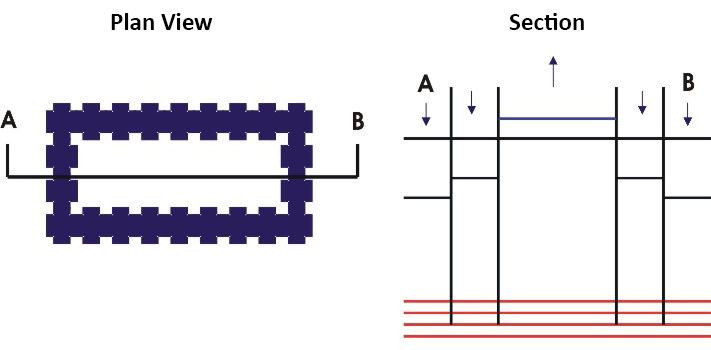Since 1989, more than 20 test cells have been installed by the University of Waterloo for field research purposes at CFB Borden and another site in southwestern Ontario. These have ranged in dimensions from 1 by 3 to 9 by 9 m, and extended to depths of 3 to 15 m. Several of these cells have been constructed with concentric double walls, a configuration which facilitates rigorous hydraulic testing.
Figure 1 shows a schematic diagram of such a double-walled cell in which a hydraulic test was undertaken. The cell extended to a depth of 14.7 m through a surficial sand aquifer into an underlying aquitard.
The sealable cavities were injected with a bentonite slurry. For the test, the water level in the moat bounded by the two walls was maintained at a constant level. At the start of the test, the water level in the internal cell was raised by approximately 1 m relative to the natural water table in the vicinity of the cell.
As the test proceeded, the decline in water level in the internal cell was monitored with time. Corrections were made to these levels to account for losses by evaporation.

Figure 1. Borden Hydraulic Conductivity Testing of Double-walled Cell
In applying an analytical solution to assist in interpretation of data, it was assumed that the underlying aquitard was impermeable and that all leakage from the internal cell occured laterally through the barrier wall. In reality, some vertical leakage into the underlying aquitard would have occured, so this assumption would result in an overestimation of the hydraulic conductivity of the barrier.
As shown in Figure 2, the bulk hydraulic conductivity of the cell wall was calculated to be 6 x 10-9 cm/sec. Similar tests in other cells, including those sealed with organic polymers, resulted in bulk hydraulic conductivities ranging from 10-8 to 10-10 cm/sec.

Figure 2. Hydraulic Test Results
